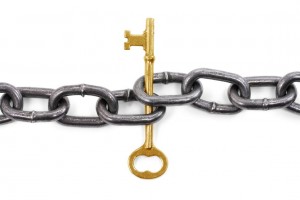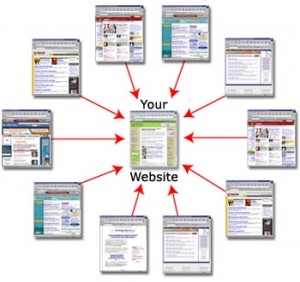 Often website owners believe that getting top rankings is simply a matter of changing their website, and certainly these “on-page” factors do play an important part. However, rankings are also significantly influenced by external factors – and the most important of these is the number and quality of inbound links or backlinks (links from third party websites).
Often website owners believe that getting top rankings is simply a matter of changing their website, and certainly these “on-page” factors do play an important part. However, rankings are also significantly influenced by external factors – and the most important of these is the number and quality of inbound links or backlinks (links from third party websites).
In determining rankings, all search engines also take into account the “value” that the rest of the web places on a particular website or page. One of the best ways for search engines to determine this “value“, is the way that websites link to each other. How often related websites mention a particular site and, most importantly, how they link to it, is a pretty accurate way for a search engine to determine which pages are going to be useful to searchers.
Link Building Tips
Establishing inbound links to your pages is crucial, and Link Building, should be a fundamental strategy in any Search Engine Optimisation (SEO) campaign. But exactly how do you go about generating links to your site? Traditionally building up this “link juice” can be a hard and tiresome process, but I’ve outlined below some tips for beginners on How to Get Links:
1. Link Farms? – Not any more
 First up – something that you should NOT be doing… Once upon a time – not so very long ago, a technique – called link farming – involving the creation of lots of (usually junk) sites, with plenty of cross linking was a reasonably effective way to build rankings. However, the search engines quickly realised that most of these sites were of little or no benefit to users, so they adjusted their algorithms to give priority to relevant and authoritative websites. The quantity of links to your website is not as important as the quality.
First up – something that you should NOT be doing… Once upon a time – not so very long ago, a technique – called link farming – involving the creation of lots of (usually junk) sites, with plenty of cross linking was a reasonably effective way to build rankings. However, the search engines quickly realised that most of these sites were of little or no benefit to users, so they adjusted their algorithms to give priority to relevant and authoritative websites. The quantity of links to your website is not as important as the quality.
Don’t waste your time or money creating (or even worse – paying for) hundreds of questionable links hoping it will help your rankings – it won’t. At best, search engines will ignore these types of links; at worst they may tarnish the credibility of your site, and result in penalties being applied.
2. Content is Key
An obvious, but often overlooked, fact is that “if you want someone to link to your site, you have to give them something worth linking to“. If you ask someone to link to you – why would they bother unless there was something on your site that interested them or would be of interest to their users. The perfect way to encourage inbound links is simply to fill your pages with useful, informative, interesting, entertaining, or relevant content.
3. Blog about it
One great way to add content to your site is to set up a blog. Search engines LOVE Blogs as they typically contain topical, dynamic content. Blog posts are generally crawled and indexed by search engines very quickly, and can be often found in the search results within minutes of being posted. If your posts are interesting, topical, controversial, humorous, or informative people will naturally link to them, and by adding their own comments, will automatically generate extra, relevant content to your site.
4. Going Viral
Sometimes, you may hit a nerve, or strike a chord with the online community by publishing a post that becomes very popular and “goes viral“. These types of posts, for a variety of reasons, get attention and tend to have a snowball effect, as more and more people become aware of them, and feel compelled to spread the word. Articles of this type are known as ‘link bait’, because people naturally want to link to them, and can very quickly generates hundreds or even thousands of backlinks. It is worth striving for a viral post, but it is extremely difficult to do. You also need to consider the impact on your credibility – a shocking or controversial post, might generate amazing link juice, but keep in mind what long term impact it might it have on you or your sites reputation.
5. Be Social
Be active in the Blogs/Forums/Social Media sites that are relevant to your industry. Don’t just read about it, participate, and make an effort to actively comment on topics and issues that you are knowledgeable about. Develop a “presence” and over time you can subtly include references and possibly links to your site. Do NOT push this too hard – no one likes a pushy salesman.
6. Network
One very important way to develop inbound links to your web pages is to capitalise on your contacts in the industry. In your day to day dealings with suppliers, customers, industry associations, and even competitors, keep the possibility of a backlink in mind – and don’t be shy to ask. The best backlinks are those that come from relevant sites – and could there be anything more relevant than other sites within your industry?
7. Anchors Away
Not only are the quality and quantity of backlinks important – but the way the links are applied also plays a part. Anchor text refers to the text that is used in the link, and although you may not always have control over what anchor text is used – wherever possible try to use primary keywords rather than generic text. A link to your site with the anchor text “click here” is likely to be of much less value than “buy keyword now“.
8. Deep Link
Wherever possible mix up the links to your site. Although the majority of backlinks will often go to a websites home page, a natural link profile will also include links to other pages within a site. Try to establish targeted backlinks, with more specific anchor text, to pages deep within the structure of your site.
There are literally hundreds of ways you can generate backlinks to your website, this post has outlined some of the fundamentals, and provides some quick and easy tips about how you can develop links to your website, with the aim of raising your online profile and improving your rankings. If you’d like further assistance, please feel free to contact us at WebConsulting SEO.